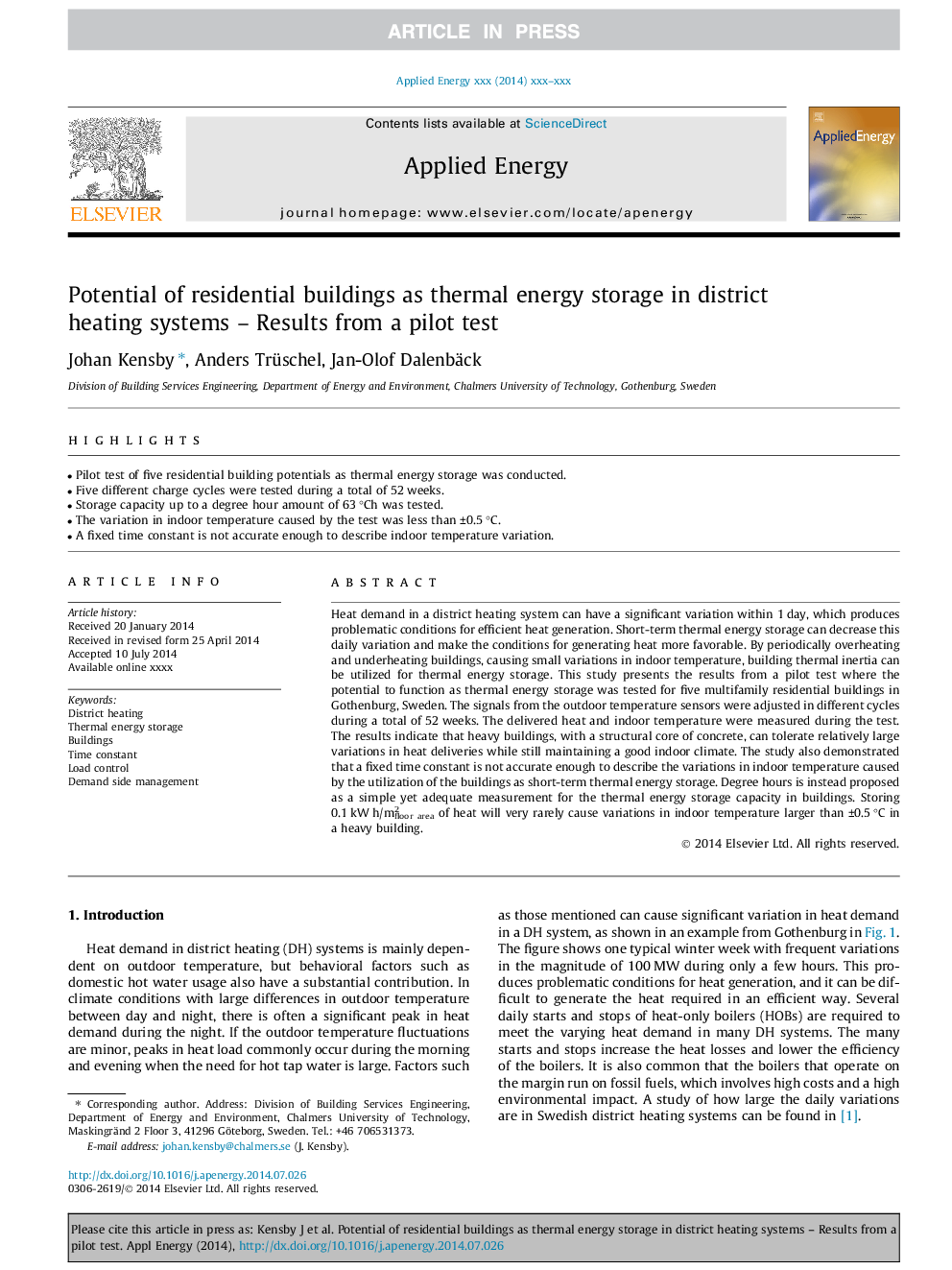| کد مقاله | کد نشریه | سال انتشار | مقاله انگلیسی | نسخه تمام متن |
|---|---|---|---|---|
| 6688863 | 501887 | 2015 | 9 صفحه PDF | دانلود رایگان |
عنوان انگلیسی مقاله ISI
Potential of residential buildings as thermal energy storage in district heating systems - Results from a pilot test
ترجمه فارسی عنوان
پتانسیل ساختمان های مسکونی به عنوان ذخیره سازی انرژی حرارتی در سیستم های حرارت مرکزی - نتایج یک آزمایش آزمایشی
دانلود مقاله + سفارش ترجمه
دانلود مقاله ISI انگلیسی
رایگان برای ایرانیان
کلمات کلیدی
گرمایش منطقه، ذخیره انرژی حرارتی، ساختمان ها، ثابت زمانی، کنترل بار، مدیریت سمت تقاضا،
موضوعات مرتبط
مهندسی و علوم پایه
مهندسی انرژی
مهندسی انرژی و فناوری های برق
چکیده انگلیسی
Heat demand in a district heating system can have a significant variation within 1 day, which produces problematic conditions for efficient heat generation. Short-term thermal energy storage can decrease this daily variation and make the conditions for generating heat more favorable. By periodically overheating and underheating buildings, causing small variations in indoor temperature, building thermal inertia can be utilized for thermal energy storage. This study presents the results from a pilot test where the potential to function as thermal energy storage was tested for five multifamily residential buildings in Gothenburg, Sweden. The signals from the outdoor temperature sensors were adjusted in different cycles during a total of 52 weeks. The delivered heat and indoor temperature were measured during the test. The results indicate that heavy buildings, with a structural core of concrete, can tolerate relatively large variations in heat deliveries while still maintaining a good indoor climate. The study also demonstrated that a fixed time constant is not accurate enough to describe the variations in indoor temperature caused by the utilization of the buildings as short-term thermal energy storage. Degree hours is instead proposed as a simple yet adequate measurement for the thermal energy storage capacity in buildings. Storing 0.1 kW h/m2floor area of heat will very rarely cause variations in indoor temperature larger than ±0.5 °C in a heavy building.
ناشر
Database: Elsevier - ScienceDirect (ساینس دایرکت)
Journal: Applied Energy - Volume 137, 1 January 2015, Pages 773-781
Journal: Applied Energy - Volume 137, 1 January 2015, Pages 773-781
نویسندگان
Johan Kensby, Anders Trüschel, Jan-Olof Dalenbäck,
